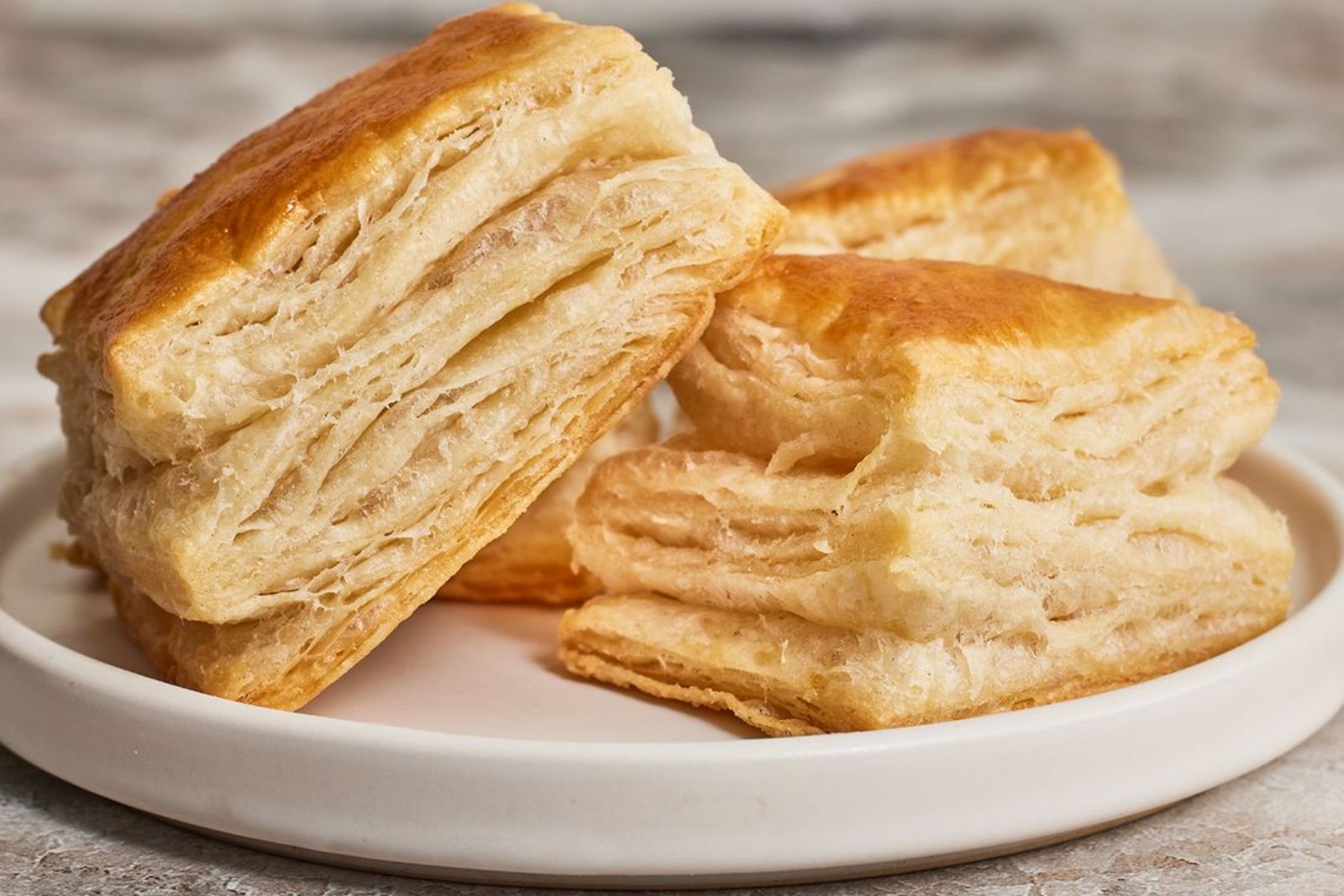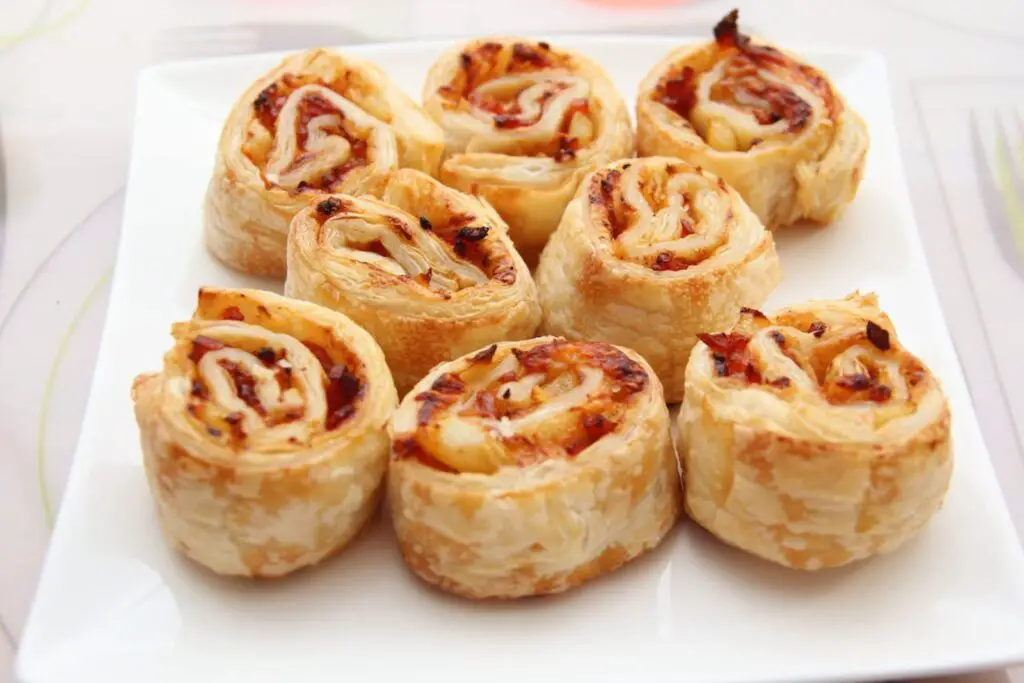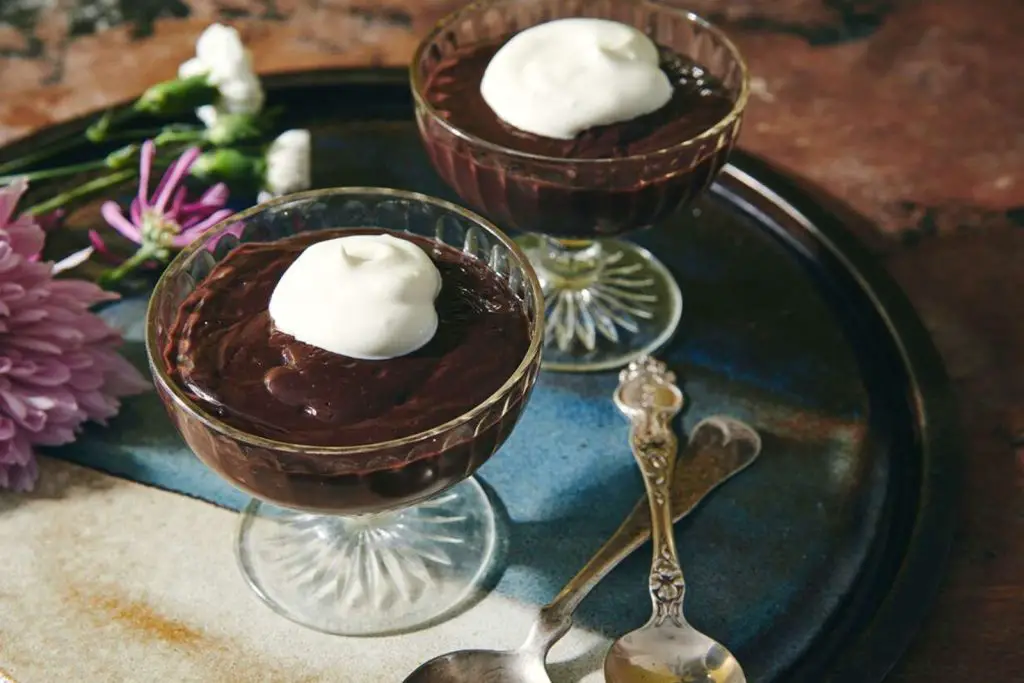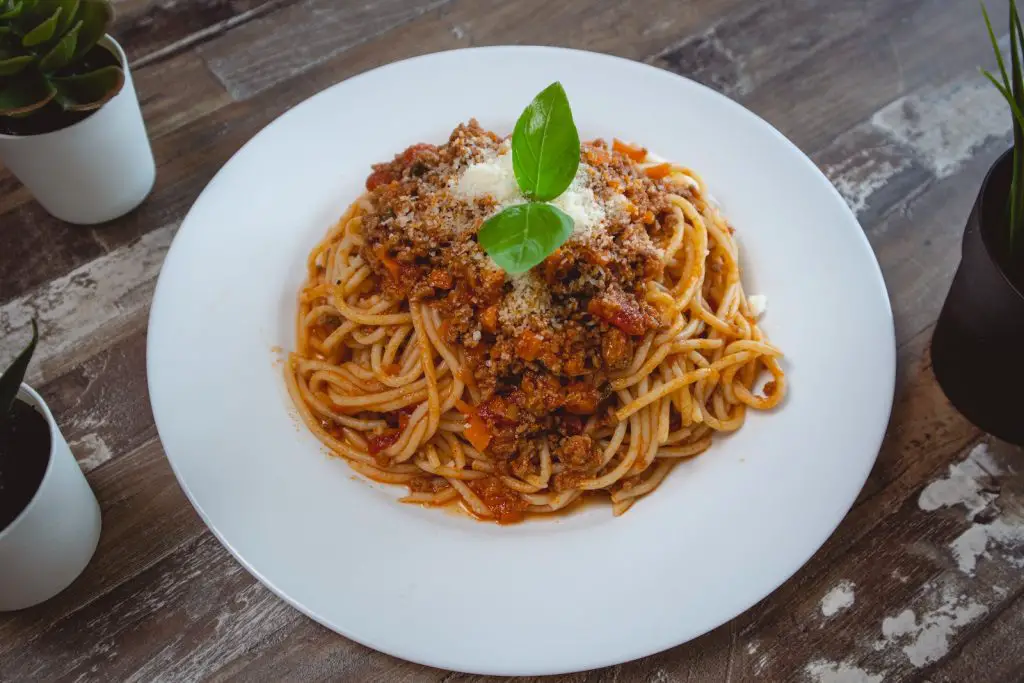
Puff pastry is a versatile and flaky dough that is cherished for its light and airy texture. Whether you’re planning to create delicate pastries, savory appetizers, or elegant desserts, having puff pastry on hand can be a time-saving convenience. Freezing puff pastry allows you to extend its shelf life and be ready for your culinary creations whenever inspiration strikes. By following a few simple steps, you can freeze puff pastry while preserving its delightful layers and buttery taste. This article presents a comprehensive guide to freezing puff pastry, ensuring that you maintain its quality for your future culinary endeavors.
Here’s a step-by-step process for freezing puff pastry:
Step 1: Choose quality puff pastry
The process of freezing puff pastry begins with the crucial step of selecting a high-quality product. Regardless of whether you opt for store-bought convenience or decide to take the homemade route, the freshness and overall condition of the puff pastry you choose will significantly impact the success of your freezing endeavor.
Puff pastry, characterized by its delicate layers and flaky texture, is the result of precise layering and folding of butter-infused dough. Its success relies on the expansion of these layers during baking, which creates the characteristic lightness and crispiness. When it comes to freezing, starting with a quality puff pastry ensures that these intricate layers will remain intact after thawing and baking.
If you’re buying store-bought puff pastry, carefully examine the packaging for any visible damage, tears, or signs of frost. The packaging should be intact, and the pastry itself should be free from discoloration, off-putting odors, or moisture. These are indicators that the puff pastry might not have been stored or handled properly, potentially compromising its texture and flavor even before freezing.
On the other hand, if you’re preparing homemade puff pastry, ensure that all the ingredients used are of high quality, including the butter. Using fresh and premium ingredients contributes to the final product’s taste and texture. Homemade puff pastry that’s well-prepared and properly chilled before freezing will yield excellent results after thawing and baking.
Step 2: Prepare the puff pastry
Once you’ve secured a high-quality puff pastry, the next step in the freezing process involves preparing it for storage. Depending on the initial size and shape of your puff pastry, taking a moment to portion it into more manageable sections can greatly facilitate the thawing and subsequent culinary process.
Puff pastry often comes in larger blocks or sheets, which might be more than what you need for a single recipe. By dividing it into smaller portions that align with your intended dishes, you not only ensure efficient usage but also simplify the thawing process. Smaller sections thaw more quickly and evenly than larger ones, helping you save time and achieve consistent results.
When portioning the puff pastry, consider the recipes you have in mind. For instance, if you’re planning to make individual pastries or turnovers, cutting the pastry into squares or rectangles that match the desired dimensions can be highly advantageous. Similarly, if you intend to create a larger tart or pastry, pre-cutting the puff pastry into the required shape can streamline the preparation process later on.
Moreover, working with smaller portions of puff pastry can help minimize waste. You can thaw only the amount you need for a particular recipe, leaving the rest of the pastry safely stored in the freezer for future culinary adventures.
Additionally, smaller sections of puff pastry are easier to handle during the thawing process. They thaw more uniformly, reducing the risk of uneven texture or moisture accumulation that can occur when larger pieces are thawed slowly.
Step 3: Wrap the pastry securely
As you progress through the process of freezing puff pastry, ensuring its protection against the harsh conditions of the freezer becomes paramount. Properly wrapping each portion of puff pastry is a crucial step to safeguard its delicate layers, prevent freezer burn, and maintain its desired texture and flavor.
Freezer burn occurs when food is exposed to air and moisture in the freezer, causing dehydration and oxidation. For puff pastry, which relies on its distinctive layers of butter and dough to achieve its flaky consistency, preventing freezer burn is vital to retaining its quality.
To wrap the puff pastry securely, consider using either plastic wrap or aluminum foil. These materials act as barriers against air and moisture, creating a protective layer around the pastry. Begin by placing the portion of puff pastry in the center of the chosen wrap.
Next, gently fold the wrap over the pastry, ensuring that it covers all sides completely. The goal is to minimize air exposure and create a snug seal. If you’re using plastic wrap, press down gently to eliminate any air pockets. If you’re using aluminum foil, fold the edges tightly to encase the pastry securely.
Pay special attention to the corners and edges of the puff pastry. These areas are more vulnerable to moisture infiltration and freezer burn. Ensure that there are no exposed sections that could compromise the pastry’s texture or taste upon thawing and baking.
In addition to preventing freezer burn, the tightly wrapped pastry also preserves its freshness and prevents odors from other foods in the freezer from permeating the delicate layers.
Step 4: Place in an airtight container
As you continue to navigate the process of freezing puff pastry, the importance of safeguarding its quality becomes increasingly evident. While wrapping each portion of puff pastry in plastic wrap or aluminum foil provides a fundamental layer of protection, placing these wrapped portions into an airtight container or a resealable freezer bag adds an extra level of defense against freezer burn and environmental factors that could compromise the pastry’s texture and taste.
Airtight containers and freezer bags are designed to create a sealed barrier that effectively locks out air and moisture. By placing the wrapped puff pastry portions within these containers, you are creating a controlled microenvironment that helps maintain the pastry’s integrity.
When using an airtight container, ensure that it is clean and dry before placing the wrapped puff pastry inside. The container should be appropriately sized to accommodate the portions without excessive empty space. This reduces the potential for air circulation within the container.
If you opt for a resealable freezer bag, choose a high-quality bag that is specifically designed for freezer use. After placing the wrapped pastry inside, carefully seal the bag, pressing out as much excess air as possible before sealing. The minimized air inside the bag minimizes the risk of freezer burn and helps preserve the pastry’s delicate layers.
The combination of wrapping the puff pastry and placing it in an airtight container or freezer bag provides a comprehensive defense against freezer burn. It also prevents the transfer of odors from other foods in the freezer, ensuring that your puff pastry retains its intended flavor profile.
Is vacuum sealing a good option for freezing puff pastry?
Vacuum sealing can be effective for freezing puff pastry, as it removes excess air and reduces the risk of freezer burn. However, be cautious not to crush the delicate layers during the vacuum sealing process.
Step 5: Label and date
As you near the completion of the process of freezing puff pastry, a simple yet essential step remains—labeling and dating the containers or bags in which you’ve stored the wrapped portions of pastry. This practice might seem like a small detail, but it plays a vital role in maintaining the quality of your frozen puff pastry and ensuring that you make the most of its potential.
Labeling each container or bag with the date of freezing serves as a practical way to track the age of the puff pastry. Freezing is an effective method of preservation, but it’s not a permanent solution. Over time, even well-packaged puff pastry can experience subtle changes in texture and flavor due to factors like freezer temperature fluctuations and potential exposure to air.
By noting the date of freezing, you establish a reference point that helps you gauge how long the puff pastry has been in the freezer. This information empowers you to make informed decisions about when to use the pastry. While frozen foods, including puff pastry, can remain safe to consume indefinitely when properly stored, their quality can gradually decline.
Using puff pastry within a reasonable time frame from the freezing date allows you to enjoy the best possible results. The layers will remain flaky, and the pastry’s buttery taste will be preserved more effectively. Generally, it’s advisable to use frozen puff pastry within three to six months for optimal quality.
Additionally, labeling each container or bag eliminates any guesswork when you’re searching for a specific portion of puff pastry. You can quickly identify the contents and select the right portion based on your recipe’s requirements.
Step 6: Freeze the puff pastry
With the preceding steps diligently followed, you’re now ready to embark on the pivotal stage of freezing the puff pastry. This phase entails placing the carefully wrapped and sealed portions of puff pastry into the freezer—a critical step that determines the preservation of the pastry’s unique texture and taste.
As you position the wrapped and sealed puff pastry portions in the freezer, consider two primary factors: efficient use of freezer space and the prevention of any potential damage to the delicate pastry.
Efficient use of freezer space is crucial for a couple of reasons. First, optimizing the use of available space allows you to fit more portions of puff pastry and other frozen items in the freezer. This not only maximizes your storage capacity but also ensures that the freezer operates at its intended efficiency, maintaining consistent temperatures throughout.
To achieve efficient space utilization, arrange the portions of puff pastry in a single layer whenever possible. This prevents them from sticking together and makes it easier to remove individual portions when needed. If you’re using an airtight container or freezer bag, ensure that it’s compact and doesn’t take up unnecessary room.
Secondly, consider the prevention of potential damage to the puff pastry. Puff pastry is delicate and prone to breaking or getting crushed. To safeguard its intricate layers, position the portions in a way that minimizes the risk of physical damage. Avoid placing heavy items or other foods on top of the puff pastry, as this could compromise its texture.
You can place the wrapped portions on a flat tray or baking sheet before transferring them to the freezer. This initial freezing on a tray prevents the pastry from sticking to the freezer’s grates and provides a stable surface until the pastry is fully frozen.
How long can I store frozen puff pastry?
Frozen puff pastry can be stored for about 3 to 6 months in the freezer. However, for the best quality, it’s recommended to use it within the first few months after freezing.
Step 7: Thaw and use frozen puff pastry
The anticipation of utilizing your frozen puff pastry for your culinary creations is met with the crucial step of thawing. Proper thawing is essential to maintain the integrity of the pastry’s delicate layers and ensure that it lives up to its potential when baked. Thawing should be done gradually and evenly to prevent any unwanted changes in texture or taste.
When you’re ready to use the frozen puff pastry, the best approach is to transfer it from the freezer to the refrigerator. This gradual thawing process takes advantage of the controlled environment of the fridge, allowing the pastry to thaw evenly without any abrupt temperature changes. As the puff pastry thaws, the layers of dough and butter can expand gently and uniformly, preserving the sought-after flakiness.
Avoid the temptation to thaw the puff pastry at room temperature or using methods like a microwave. Thawing at room temperature can lead to uneven thawing, with the outer layers thawing faster than the inner layers. This can result in a compromised texture, where some areas may become overly soft or soggy while others remain frozen. Additionally, rapid thawing can cause moisture to form on the surface of the pastry, potentially affecting its flakiness during baking.
Microwaving the puff pastry can lead to uneven heating, causing parts to become cooked while others remain frozen or undercooked. The delicate layers of puff pastry are sensitive to rapid temperature changes, and microwave thawing can result in an inconsistent final product.
By opting for refrigerator thawing, you’re ensuring that the frozen puff pastry reverts to its pliable state at a controlled pace. Depending on the size and thickness of the portion, thawing can take several hours overnight. Once the puff pastry is fully thawed, it’s ready to be shaped, filled, or used in your desired recipes.
How can I prevent puff pastry from sticking to the rolling pin when thawing?
Lightly flour your rolling pin and work surface to prevent sticking when rolling out thawed puff pastry. Use a gentle touch to avoid pressing too hard and squishing the layers.
Step 8: Create your culinary delights
After patiently allowing the frozen puff pastry to thaw completely, you’re now poised to embark on a culinary adventure in your kitchen. With the thawed puff pastry at your fingertips, a world of gastronomic possibilities awaits, as you can craft an extensive array of both sweet and savory dishes that will dazzle the senses.
Thawing the puff pastry in the refrigerator, as outlined in the previous steps, ensures that the delicate layers and structure are well-preserved. This means that once the pastry is fully thawed, its texture and flakiness will be similar to that of freshly made dough. This quality is crucial for achieving the desired results in your baked creations.
As you contemplate the numerous dishes you can conjure, let your creativity run wild. Puff pastry’s versatility makes it an ideal canvas for both classic and innovative recipes. Here are some delectable ideas to spark your imagination:
- Sweet Treats: From elegant fruit tarts adorned with vibrant berries to delicate Napoleons layered with pastry cream and puff pastry, the options are boundless. Create impressive Danish pastries filled with jam or custard, or craft indulgent turnovers stuffed with spiced apples or chocolate.
- Savory Delights: Dive into the realm of savory delights by crafting cheesy spinach and feta triangles or mini quiches bursting with flavorful fillings. Experiment with gourmet-style appetizers like puff pastry-wrapped asparagus or mushroom and cheese pinwheels.
- Elegant Pies and Tarts: Design exquisite main courses with elegant pot pies featuring tender chicken or rich beef fillings, all encased in a flaky puff pastry shell. Create visually stunning tarts topped with roasted vegetables, cheese, and fresh herbs.
- Inventive Twists: Push culinary boundaries with inventive twists like savory palmiers filled with pesto or sun-dried tomatoes. Elevate classic dishes by wrapping sausages in puff pastry to make elegant sausage rolls.
Remember that working with thawed puff pastry requires gentle handling to maintain its delicate layers. Roll out the pastry on a lightly floured surface to the desired thickness, and cut or shape it as needed for your chosen recipe. When using the dough, ensure that it’s not overworked, as this can affect its final texture.
The beauty of using thawed puff pastry is that it saves you time and effort while delivering professional-looking and delectable results. Each dish you create becomes a masterpiece, with the puff pastry’s flaky layers adding an element of elegance and indulgence.
Other related questions
Can I refreeze puff pastry?
Yes, you can refreeze puff pastry, but it’s best to avoid doing so multiple times as repeated freezing can affect texture and quality. Thawed pastry should be used promptly to minimize quality loss. Always adhere to safe food handling guidelines to ensure optimal results.
How do I know if the puff pastry has gone bad after being frozen?
Signs of frozen puff pastry going bad include unusual odor, off-color appearance, excessive ice crystals, or a dry, crumbly texture. If any of these changes are evident, discard the pastry. Always follow proper storage procedures to maintain its quality during freezing.
Can I freeze baked puff pastry?
Yes, you can freeze baked puff pastry, but it’s important to note that the texture may change upon thawing and reheating. Baked puff pastry can become less crispy and flaky after freezing. To freeze baked puff pastry, let it cool completely, wrap it tightly in plastic wrap or foil, and then place it in an airtight container or freezer bag. When reheating, use an oven or toaster oven to help restore some of the original texture.
Can I freeze puff pastry after baking it partially?
Partially baking puff pastry and then freezing it is not recommended. The partially baked layers might not retain their intended texture and flakiness after freezing and reheating. It’s best to freeze raw puff pastry before baking for optimal results.
Can I freeze puff pastry with fillings already inside?
Freezing puff pastry with fillings can be tricky, as the fillings might release moisture during freezing and affect the pastry’s texture. For best results, freeze the unfilled pastry and add the fillings after thawing.
Can I freeze puff pastry scraps?
Yes, you can freeze puff pastry scraps. Form them into a ball, wrap them tightly in plastic wrap or foil, and place them in an airtight container or freezer bag. You can use these scraps for smaller baked items later.








